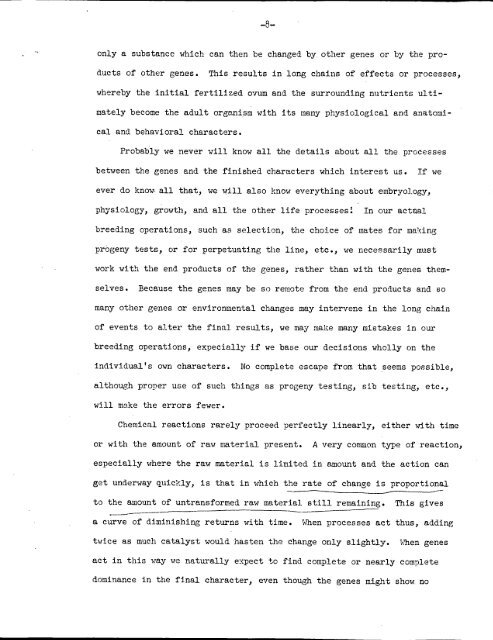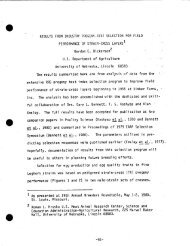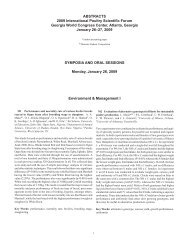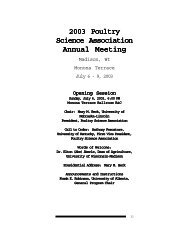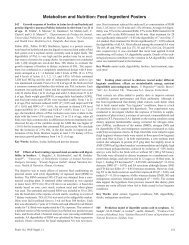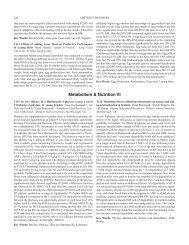Explanation Of Gene Action As Related To Physiological
Explanation Of Gene Action As Related To Physiological
Explanation Of Gene Action As Related To Physiological
Create successful ePaper yourself
Turn your PDF publications into a flip-book with our unique Google optimized e-Paper software.
-8-<br />
"_ only a substance which can then be changed by other genes or by the products<br />
of other genes. This results in long chains of effects or processes,<br />
whereby the initial fertilized ovum and the surrounding nutrients ultimately<br />
become the adult organism with its many physiological and anatomical<br />
and behavioral characters.<br />
Probably we never will know all the details about all the processes<br />
between the genes and the finished characters which interest us. If we<br />
ever do know, all that, we will also know everything about embryology,<br />
physiology, growth, and all the other life processes_ In our actmal<br />
breeding operations, such as selection, the choice of mates for making<br />
progeny tests, or for perpetuating the line, etc., we necessarily must<br />
work with the end products of the genes, rather than with the genes themselves.<br />
Because the genes may be so remote from the end products and so<br />
many other genes or environmental changes may intervene in the long chain<br />
of events to alter the final results, we may nmke many mistakes in our<br />
breeding operations, expecially if we base our decisions wholly on the<br />
individual's own characters. No complete escape from that seems possible,<br />
although proper use of such things as progeny testing, sib testing, etc.,<br />
will make the errors fewer.<br />
Chemical reactions rarely proceed perfectly linearly, either with time<br />
or with the amount of raw _terial present. A very common type of reaction,<br />
especially where the raw material is limited in amount and the action can<br />
get underway quickly, is that in which the rate of change is proportional<br />
to the amount of untransformed raw material still remaining. This gives<br />
a curve of diminishing returns with time. %_en processes act thus, adding<br />
twice as much catalyst would hasten the change only slightly. T_en genes<br />
act in this way we naturally expect to find complete or nearly complete<br />
dominance in the final character, even though the genes might show: no


